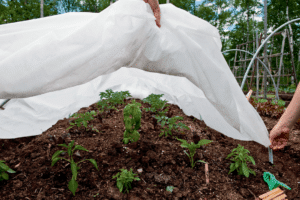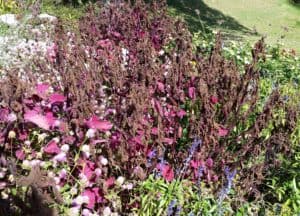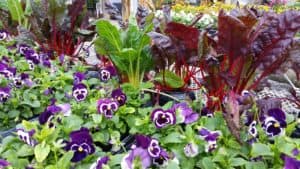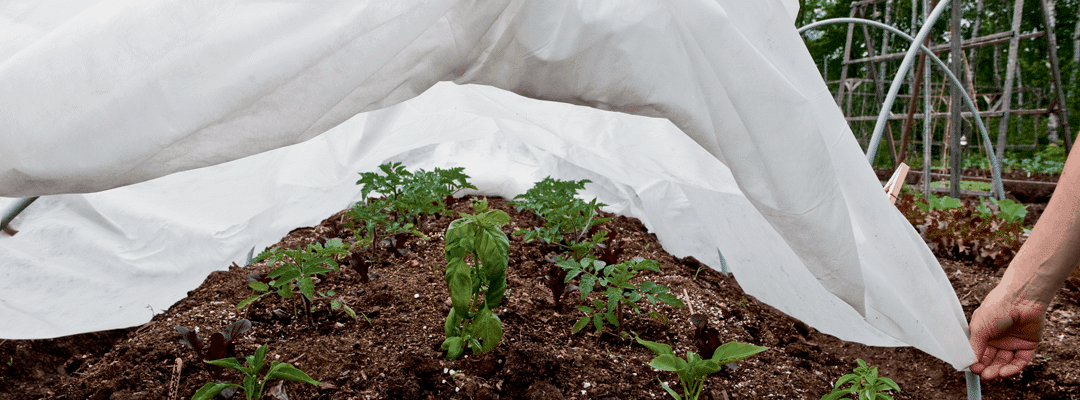Move house plants and tropicals inside, or at least under cover, for a couple of  days. Be prepared to cover annuals, tender vegetables, and mums (those with open blooms only, buds won’t be damaged). See our list below.
days. Be prepared to cover annuals, tender vegetables, and mums (those with open blooms only, buds won’t be damaged). See our list below.
Use sheets, blankets, or burlap to cover, as they are breathable. Never use plastic to cover plants. Floating row covers and frost blankets are intended for just this purpose.
For plants that can’t be covered, start watering the foliage right before dawn until temperatures rise enough that the frost won’t cause damage, usually after sun-up. The water temperature coming out of the hose is about 54 degrees and will keep plants warmer for a few minutes.
Frost can occur at temperatures as high as 39 degrees if conditions are right. Frost will not occur if there is a wind or cloud cover unless temperatures reach close to freezing (32 degrees). The nights during the full moon phase are prone to colder temperatures and frost is more likely. Plants close to a building get some protection from frost.

Garden plants that are easily damaged or killed include: impatiens, coleus, begonia, tomato, pepper, and mums (open blooms). The first frost usually kills off crabgrass and other annual grass weeds.

Plants that usually resist frost damage: fall veggies (broccoli, cabbage, lettuce, spinach, kale, etc), petunias, mums (in bud), flowering kale, and of course – pansies. We feel confident in saying that pansies, kale, and swiss chard will look good up until Christmas, sometimes longer.

